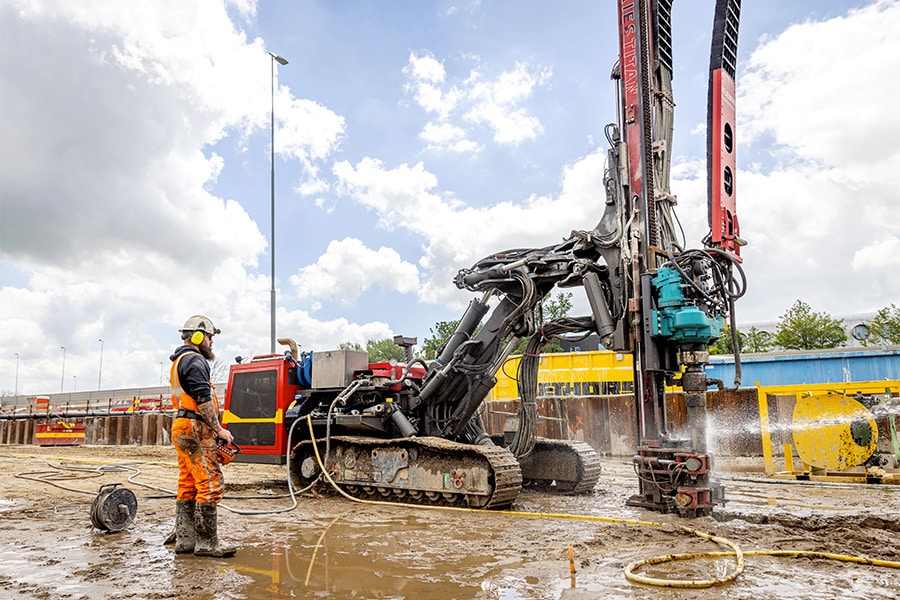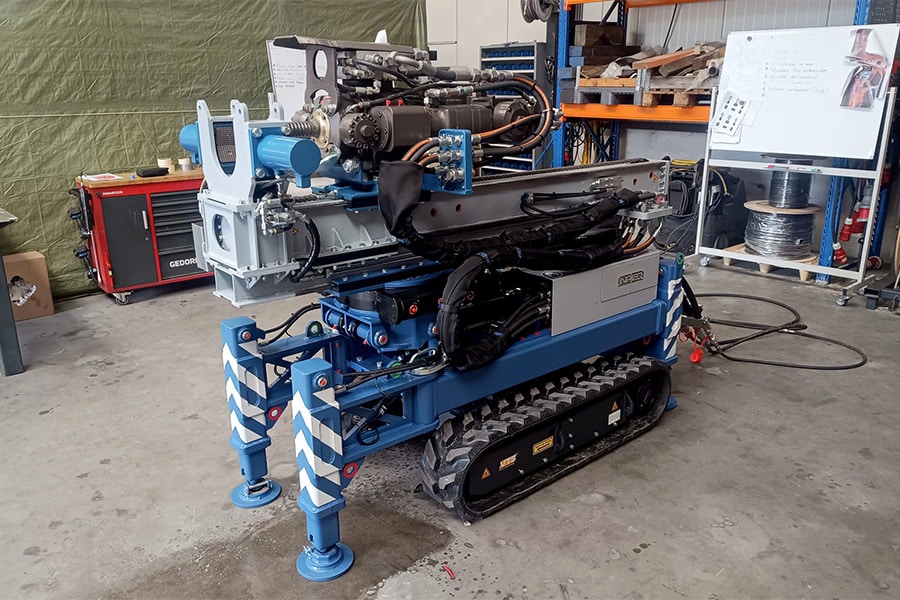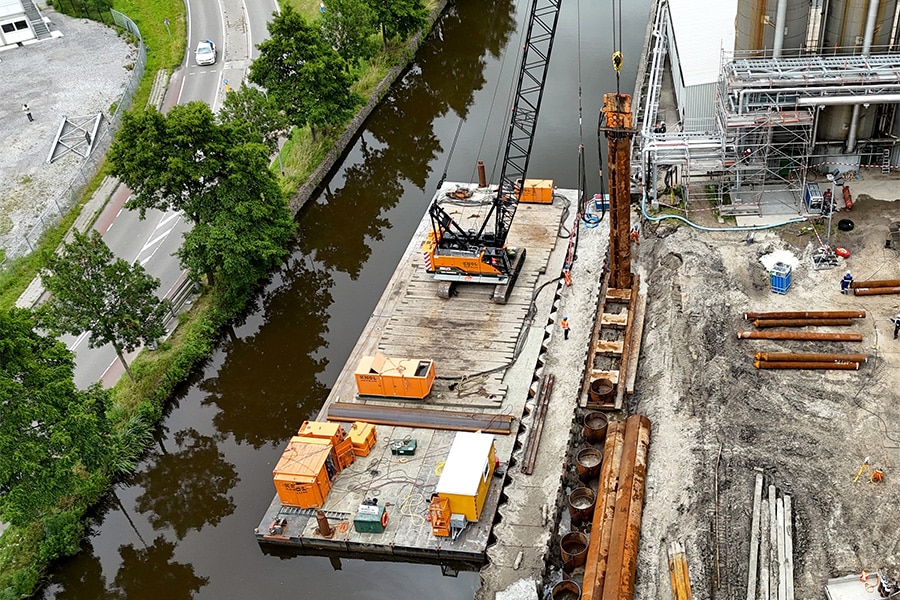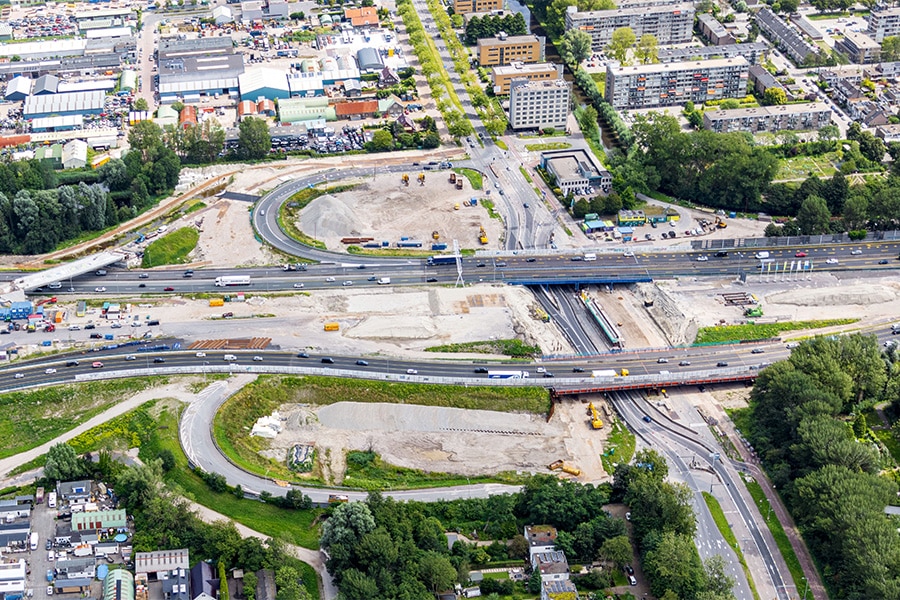
Smart bridge solutions from Retro Bridge at infrastructure projects De Groene Boog and RijnlandRoute
Anyone driving along the A16 near Rotterdam has undoubtedly already passed it: the imposing auxiliary bridge at the KW58 viaduct, in the bend over the Hoofdweg. Since the spring of 2024, traffic has been diverted here via a gigantic auxiliary bridge while the old viaduct is being demolished and replaced. "It is a project we are proud of," says Han Kastermans, general manager at Retro Bridge. "At 102.5 meters long and 25 meters wide, this is the largest highway bridge we have assembled to date."
The bridge is part of a mega-project: the new A16 Rotterdam freeway, which runs along the northeastern edge of Rotterdam. De Groene Boog - a construction combination of BESIX, Dura Vermeer, Van Oord and TBI companies Croonwolter&dros and Mobilis - is realizing this A16 on behalf of Rijkswaterstaat. For Retro Bridge, it started with a delivery order for eighteen temporary bridges around Rotterdam The Hague Airport. "When it turned out that everyone was satisfied with the delivered first auxiliary bridges, this second bridge came as a follow-up order. The great thing is that we were able to use almost all the RHB (Retro Heavy Bridge) bridge parts from that first order for this follow-up order. That amounts to almost half of our total RHB stock!"
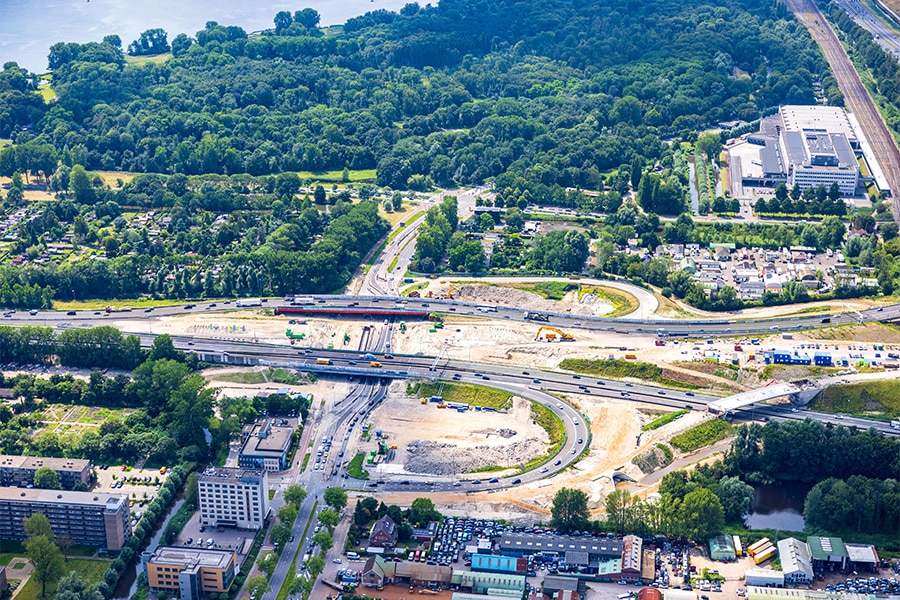
From tryout to custom solution
"This project was a kind of try-out for Rijkswaterstaat for the future temporary bridges. Everything was calculated in minute detail," Kastermans says. Every element was carefully calculated based on the latest Eurocode standards. "Precisely that combination of speed, scale and technical soundness is typical of our approach. We deliver a customized solution under pressure, without compromising on safety or quality."
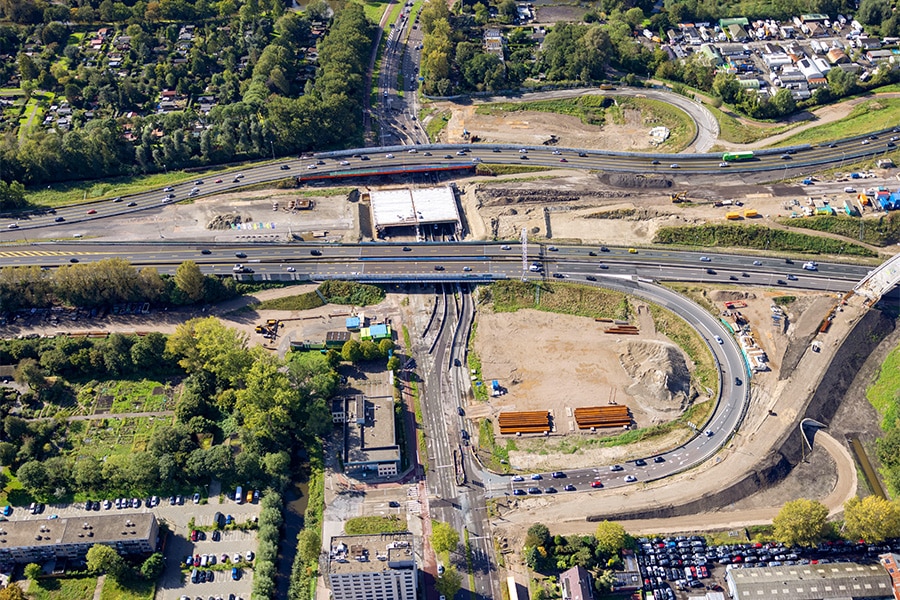
Resolving acute situations
The project was not entirely without challenges. "We had an early problem with the wearing course. On an auxiliary bridge of this size, and on such an intensively traveled route, that had to be solved acutely," Kastermans says. "In overnight interventions, we solved that quickly to the customer's satisfaction. For us, that goes without saying: if something comes up, we solve it. Constructively, there is now a very good bridge with no imperfections."
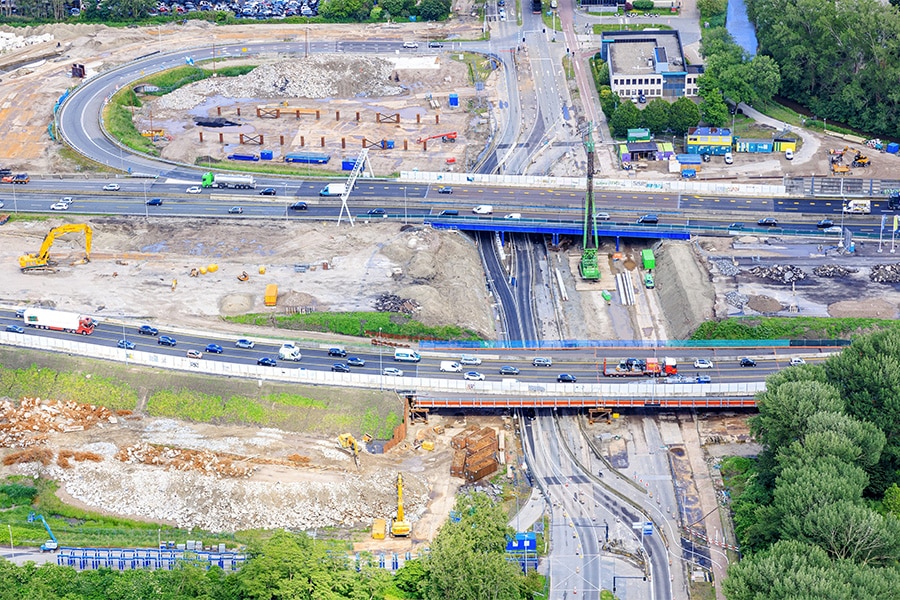
Customized bridges for Leiden
Equally interesting is the project Retro Bridge is carrying out this year in Leiden at the N206 Europaweg, part of the RijnlandRoute. "On behalf of Boskalis, we are supplying two temporary bridges there to replace the Lammebrug and Trekvlietbrug," he said.
For the fixed Trekvliet Bridge, Retro Bridge is supplying a 34.5-meter single-span Retro Heavy Bridge (RHB) system. This one is 20 meters wide. "That will be installed just before the summer," says Kastermans. This will be followed by the assembly of the temporary Lammebrug: an RLB (Retro Light Bridge) system of no less than 150 meters long, made up of five spans. The bridge has two widths of 18 and 21 meters. "That, too, is a big boy. We expect this bridge to remain in service for at least 90 weeks."
Maximum flexibility, minimum inconvenience
Whether it's a busy highway or an urban connecting road, Retro Bridge delivers high-level customization. "The great thing about this work is that we enable the progress of major infrastructure projects, without lengthy traffic disruption," Kastermans concludes. "And when everything is cleared away again, few people will know that we were once there. But we do make it possible."
Heeft u vragen over dit artikel, project of product?
Neem dan rechtstreeks contact op met Retro Bridge Netherlands.
 Contact opnemen
Contact opnemen

